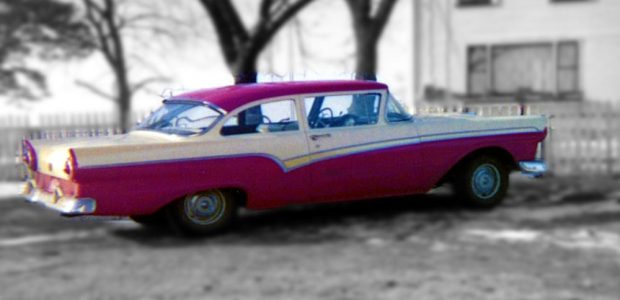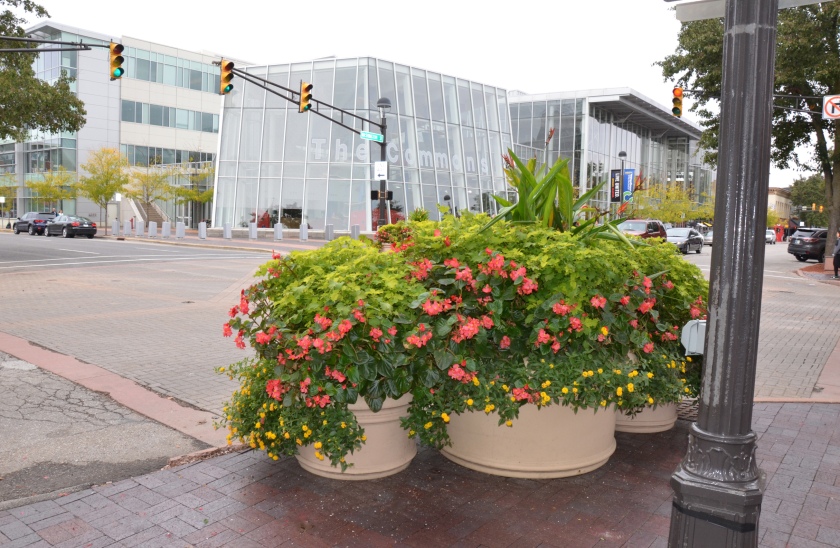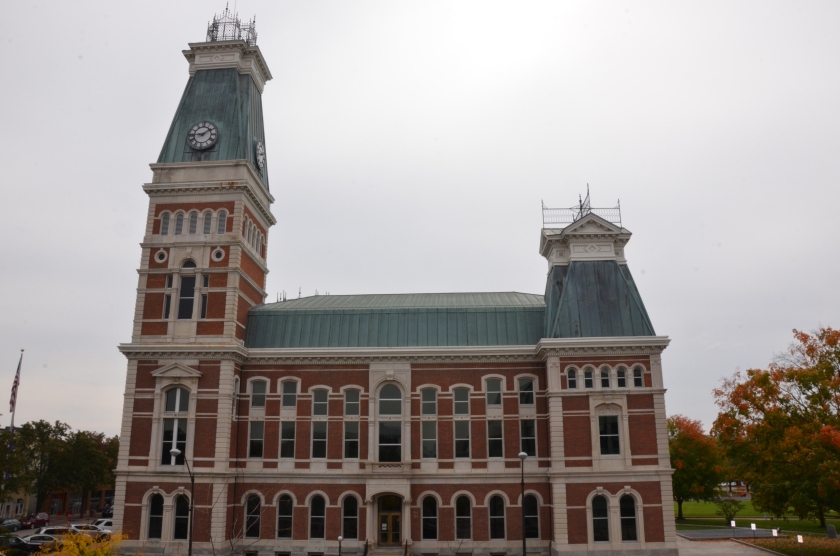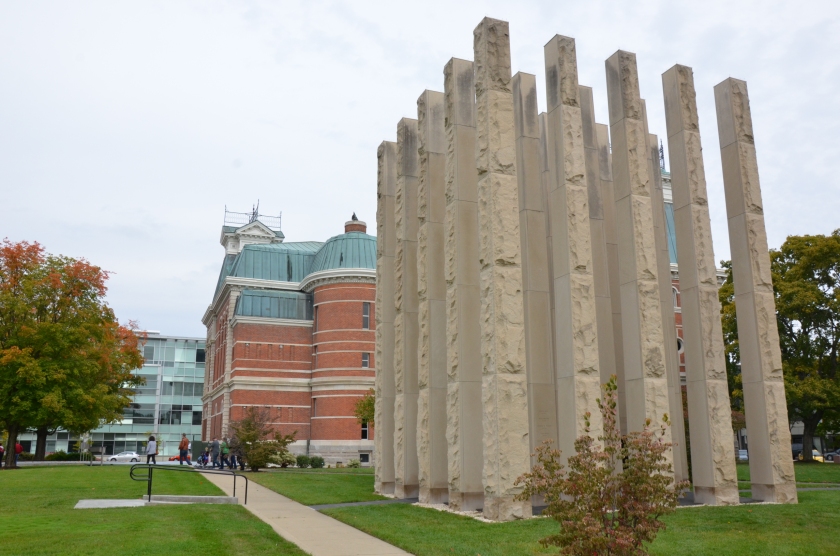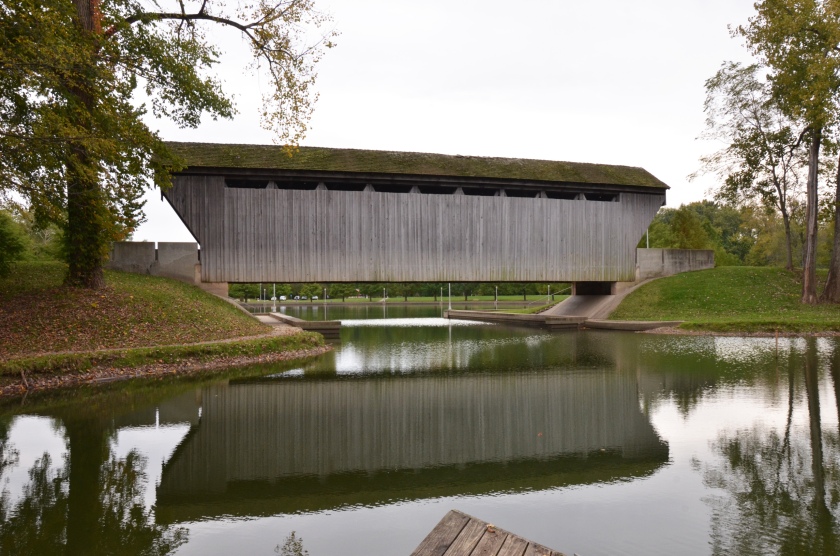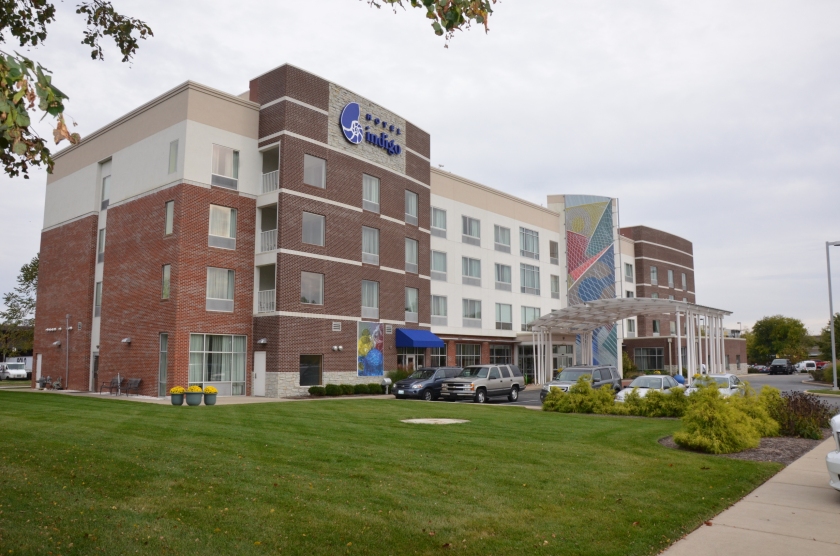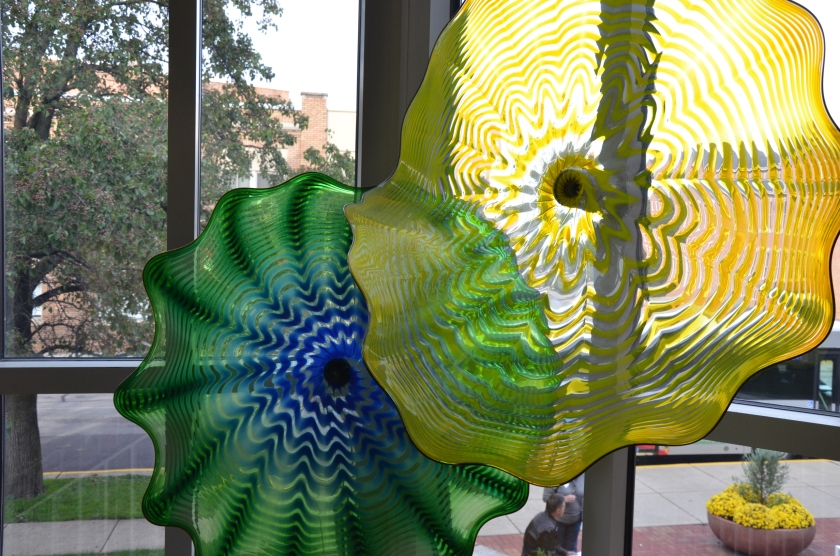The Ellwood House is a very special place to me, having been born and raised in DeKalb County, Illinois. For many years, the Ellwood House volunteers sponsored an annual Tour of Homes as a museum benefit. My mom and I, along with assorted friends and family, went on that tour every fall. We always saved the Ellwood mansion as the last house of the day, each of us looking forward to seeing our favorite room again. (Mine was the dining room.)

This time the outing was Cruzn with girlfriends, Missy and Cecille. It was their first visit to the Ellwood estate.
To begin, why is Isaac Ellwood notable? . . . we found out that he was one of the first to manufacture barbed wire, which was important in the settlement of the American West. Barbed wire allowed ranchers to economically fence in their land and keep track of their large herds of cattle.

Ellwood and his business partner, Joseph Glidden, formed a manufacturing company and shipped boxcars of barbed wire to the Plains. They both became very wealthy men.

Isaac and wife, Harriet, built a fine house with all that barbed wire money. Over the years, the 1879 mansion was updated a couple of times to its present look. Family members donated the property to the DeKalb Park District in 1964.

Also located on the grounds is the charming Little House. It was built in 1891 as a contractor’s model and parade float. The Ellwood’s eldest son, William, later purchased it for a playhouse for his two daughters.

Another interesting building is Mrs. Ellwood’s private museum. She collected so much stuff on her world travels that her exasperated husband finally had a building constructed to house it all. Today, Mrs. Ellwood’s “curiosities” are displayed in the Visitor Center, and her museum building is used for storage.
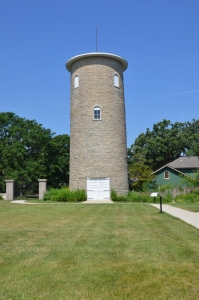
This stone water tower was once part of “Ellwood Green,” the family’s business of importing and raising Percheron draft horses. (The Ellwood property around the mansion was about 1200 acres at one time. A large stable complex, including the tower, was part of the acreage.)
The Ellwoods had seven kids – five reached adulthood – and they all lived in grand style, too.

Next door to the Ellwood mansion is the Ellwood-Nearhing House. It was built for youngest son, Perry, and his wife, May. A later owner, Mrs. Shirley Neahring, donated the property back to the Ellwood Association in 2011. You can now take a tour of this home as well.

Out on the lawn, Archduke Ferdinand, minus his sword, watches over the grounds.

The garden behind the Ellwood-Nearhing House is lovely. It is based on photographs of May Ellwood’s 1903 garden, and planted in the same location.
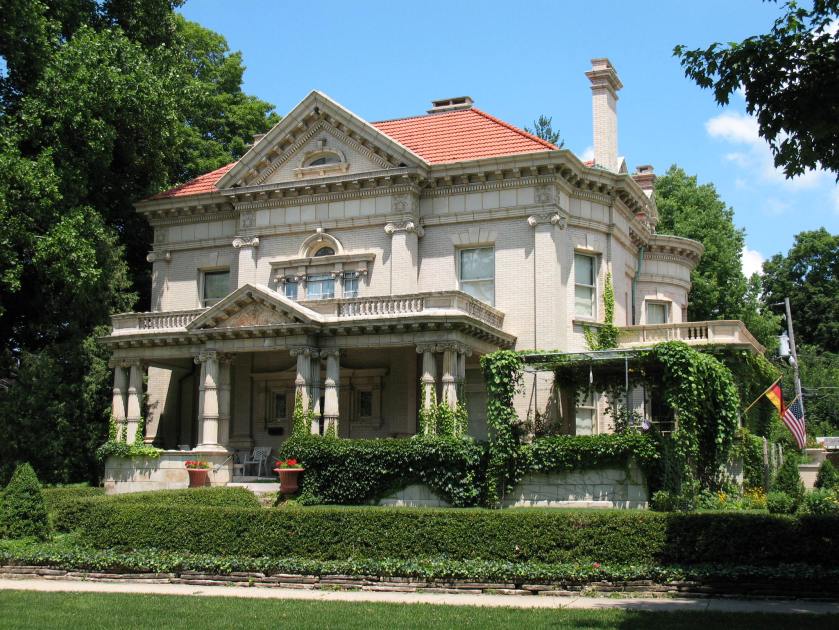
Daughter Mary and her husband, John Lewis, lived a few blocks away from the Ellwood mansion. The Lewis family moved into their new home in December 1900.

The home of another daughter, Harriet, was just down the street at 105 North First. She married a local physician.

To complete your study of the Ellwood family, visit Fairview Cemetery at the south end of DeKalb. Peek inside the Ellwood mausoleum, and you’ll see a beautiful stained glass window, thought to be a Tiffany.
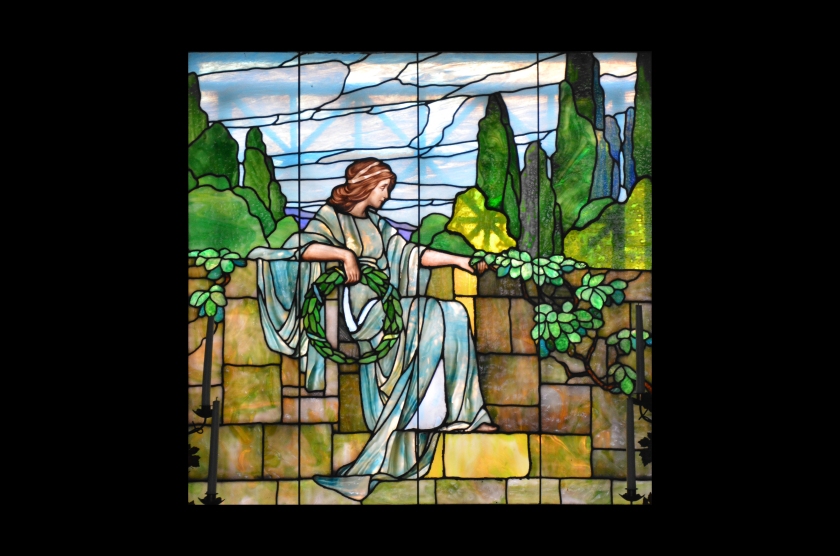
The Ellwood House Museum shares a great American success story and is well worth a visit!
Ellwood House Museum
509 North First Street
DeKalb, Illinois
http://www.ellwoodhouse.org
Bonus stop: Egyptian Theater

Just a few blocks from the Ellwood House is the Egyptian Theater, a former vaudeville hall and movie house, and now a regional arts center. It originally opened in December 1929. The architecture was inspired by a national fascination with ancient Egypt after the discovery of King Tut’s tomb in 1922. There were over 100 Egyptian-style theaters built in the U.S. in the early 1900s, but this DeKalb theater is one of only five remaining today, and it is the only one east of the Rocky Mountains.
Growing up in the DeKalb area, I have many fond memories of watching movies at “the Egyptian.”
